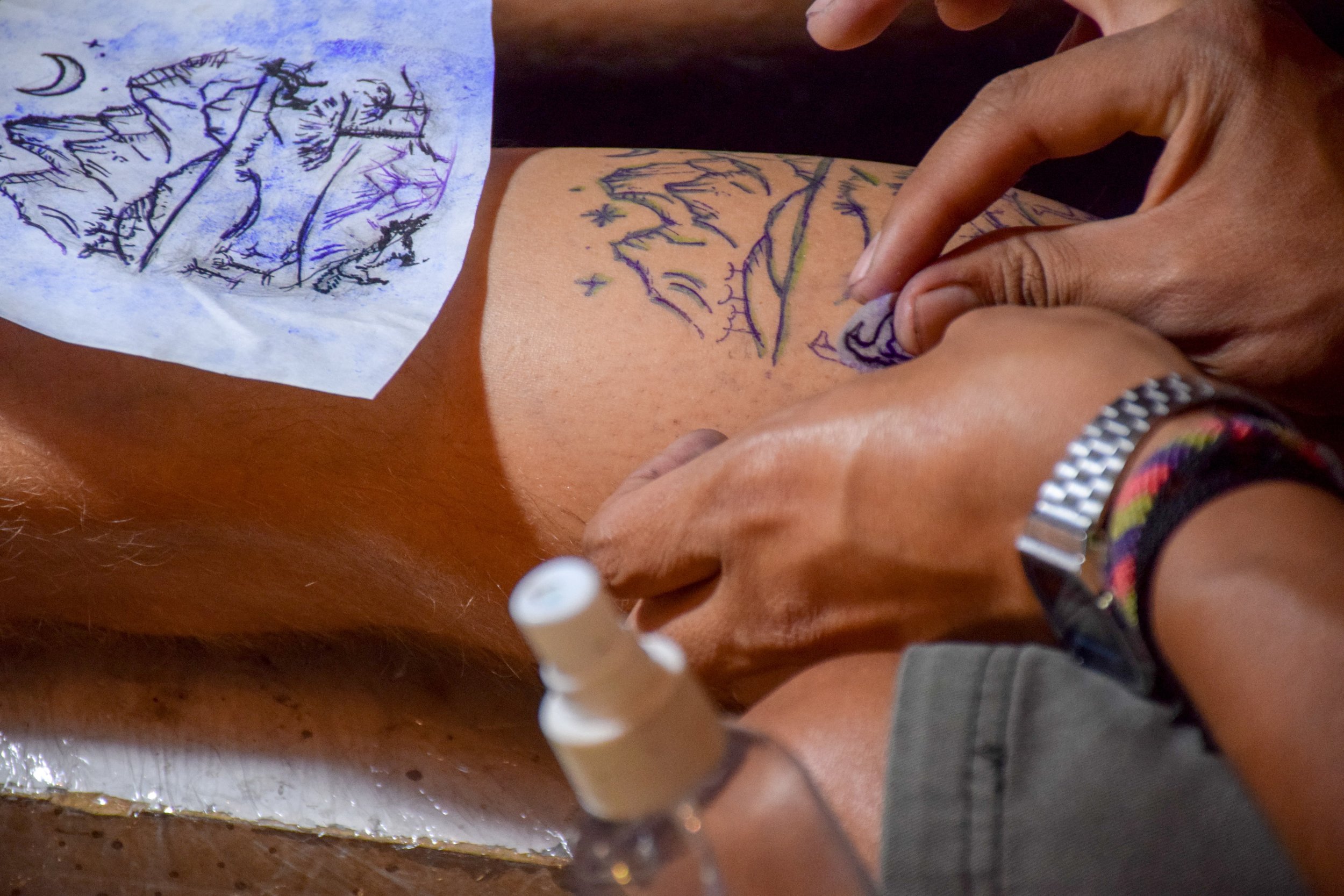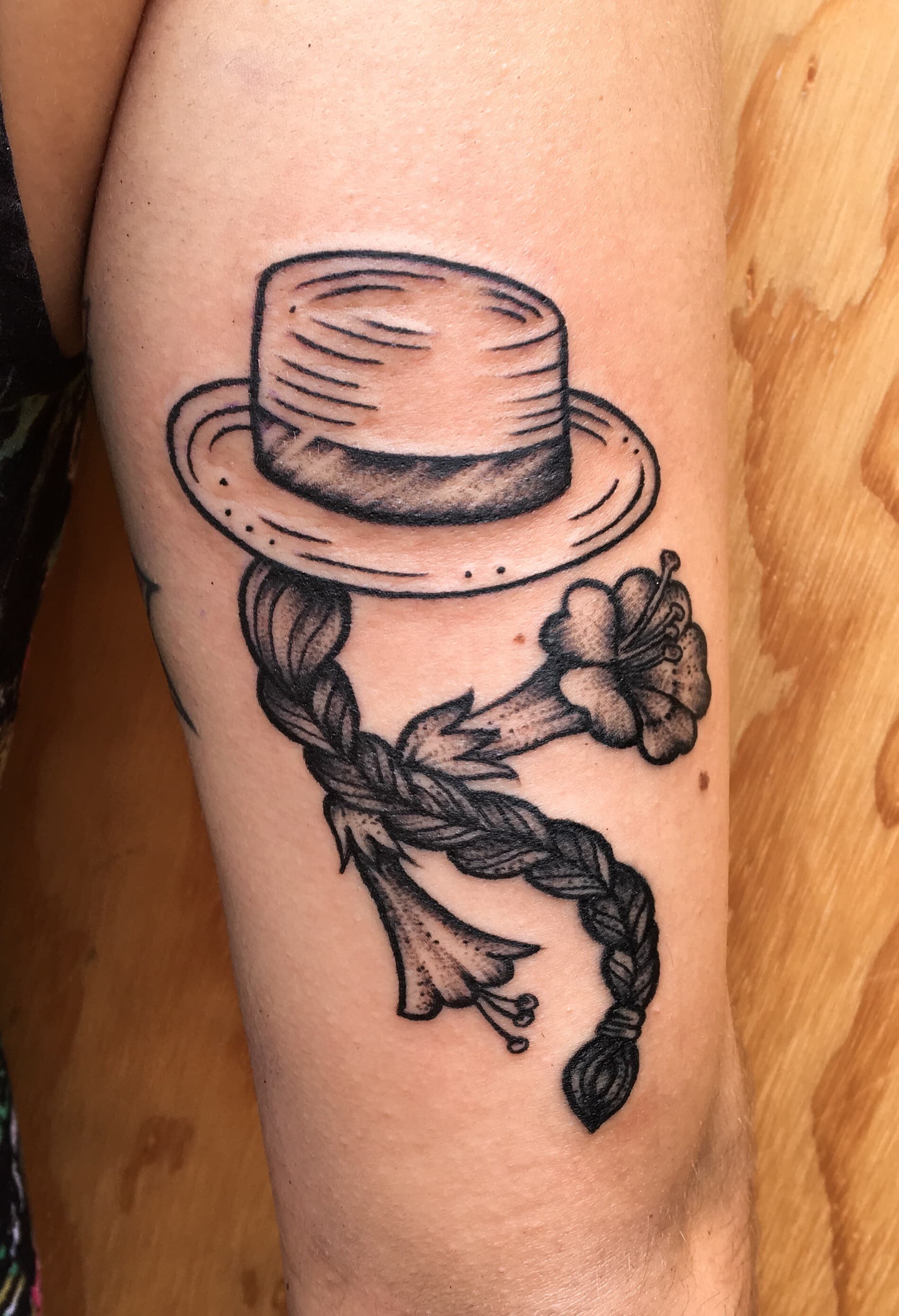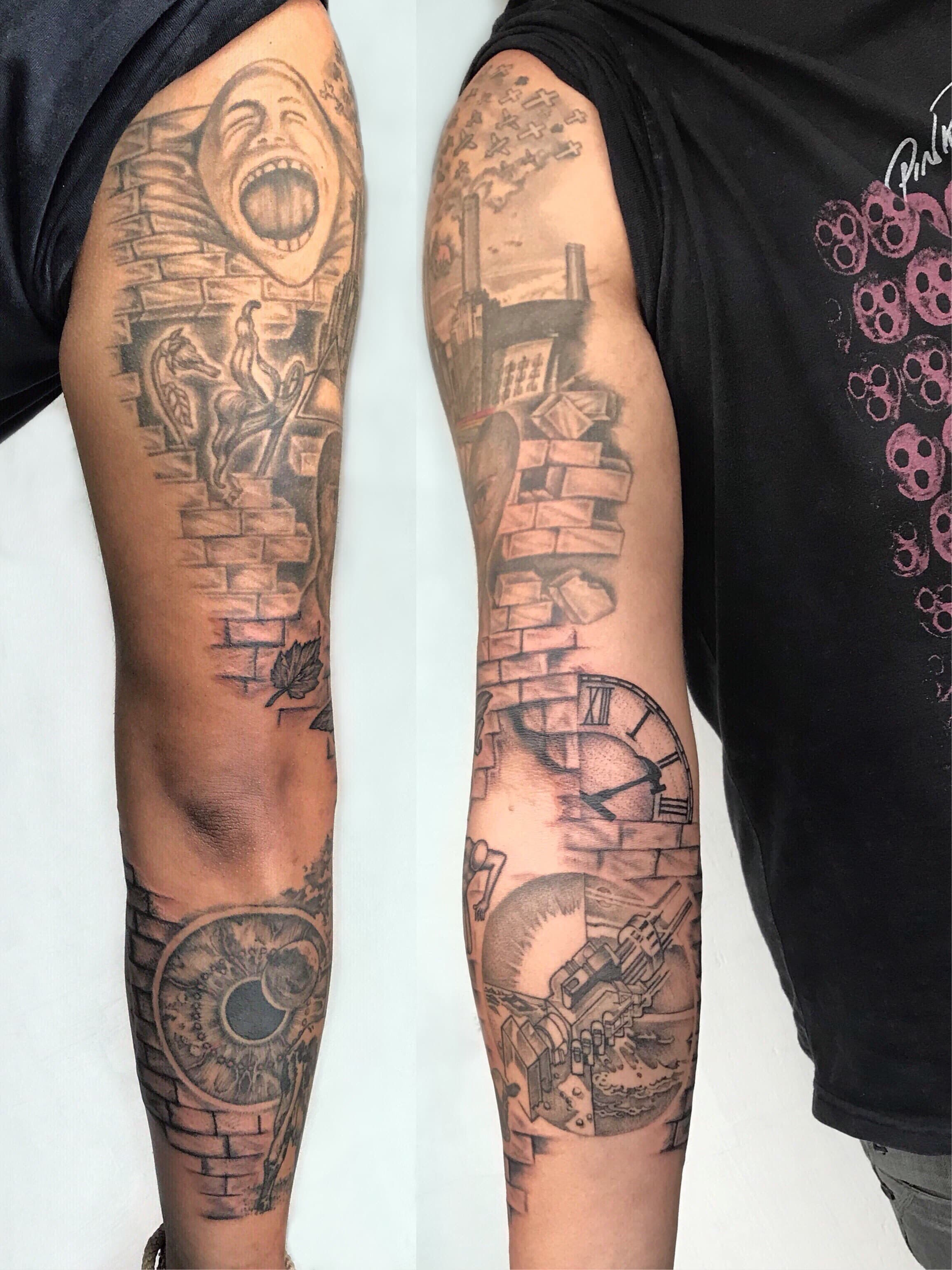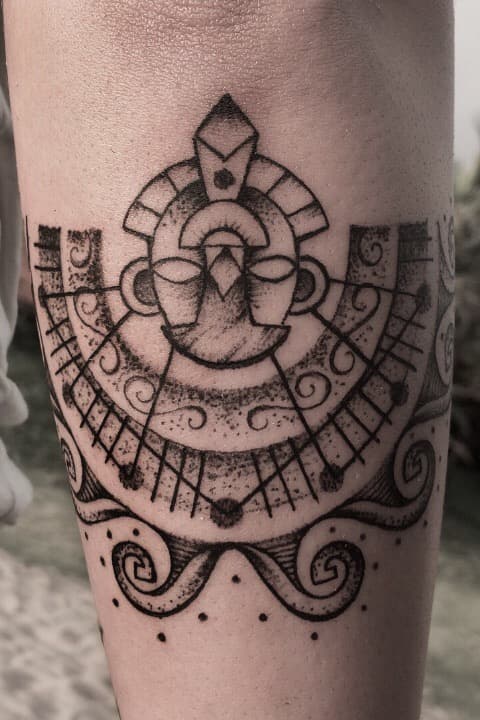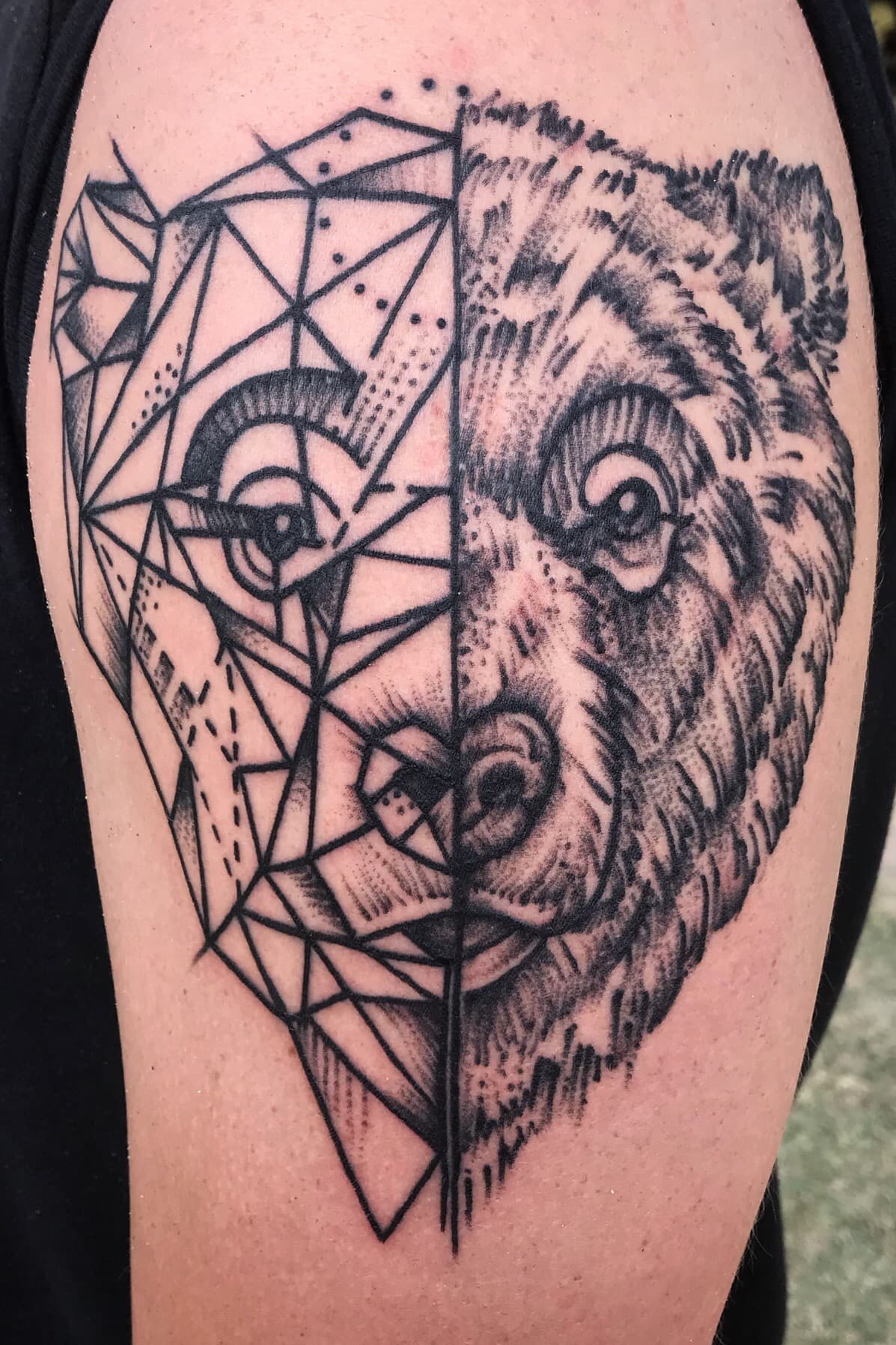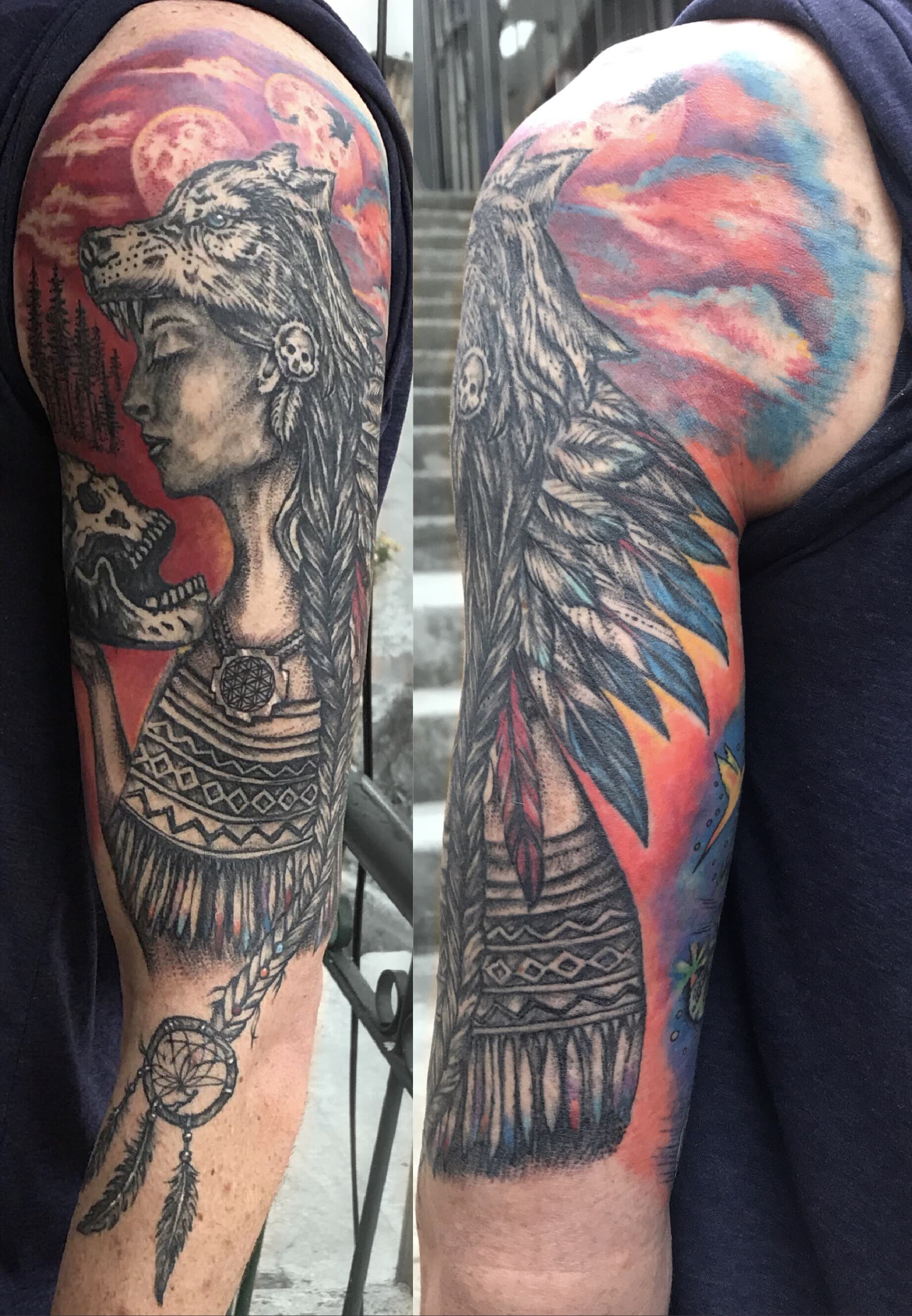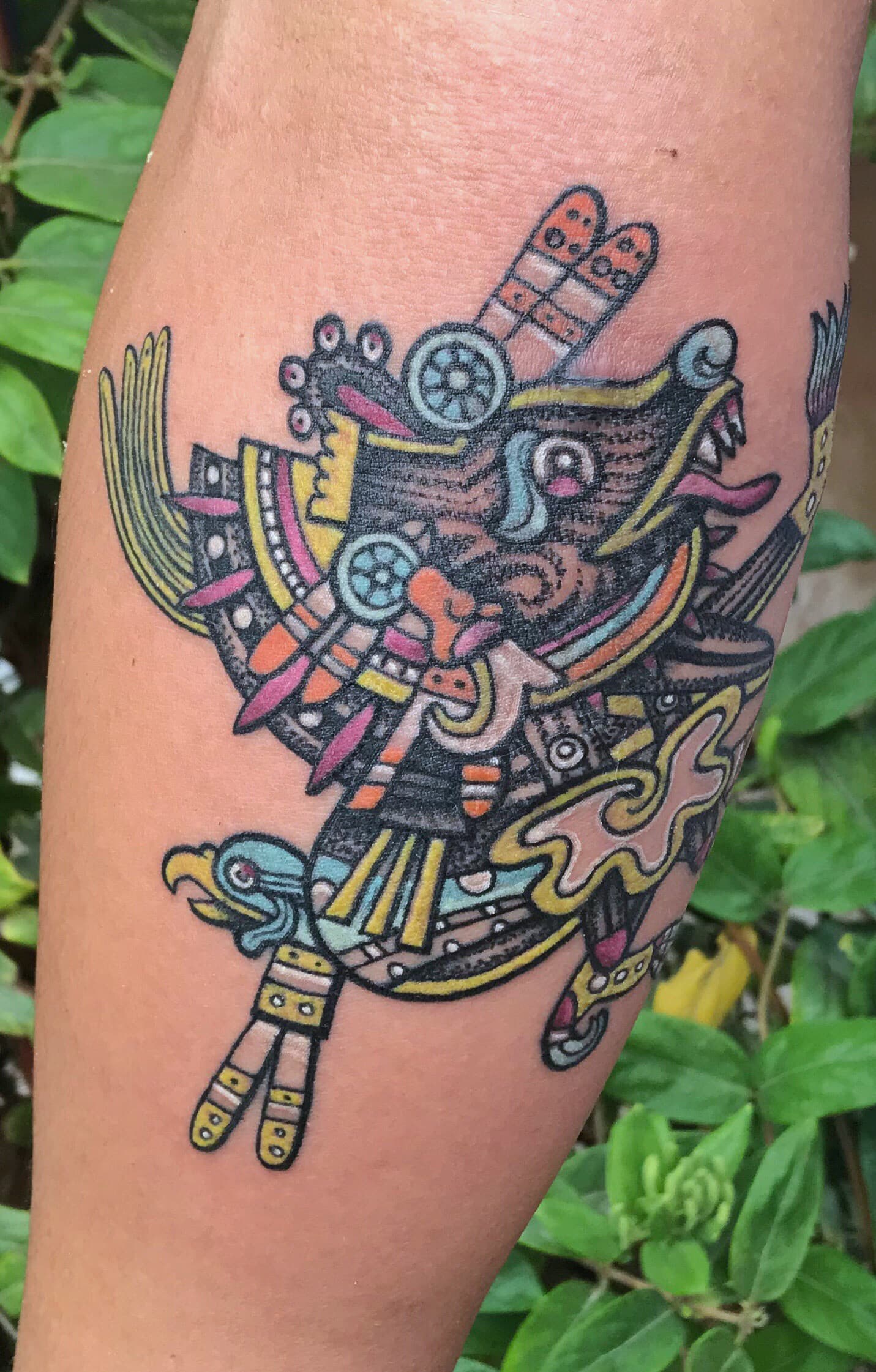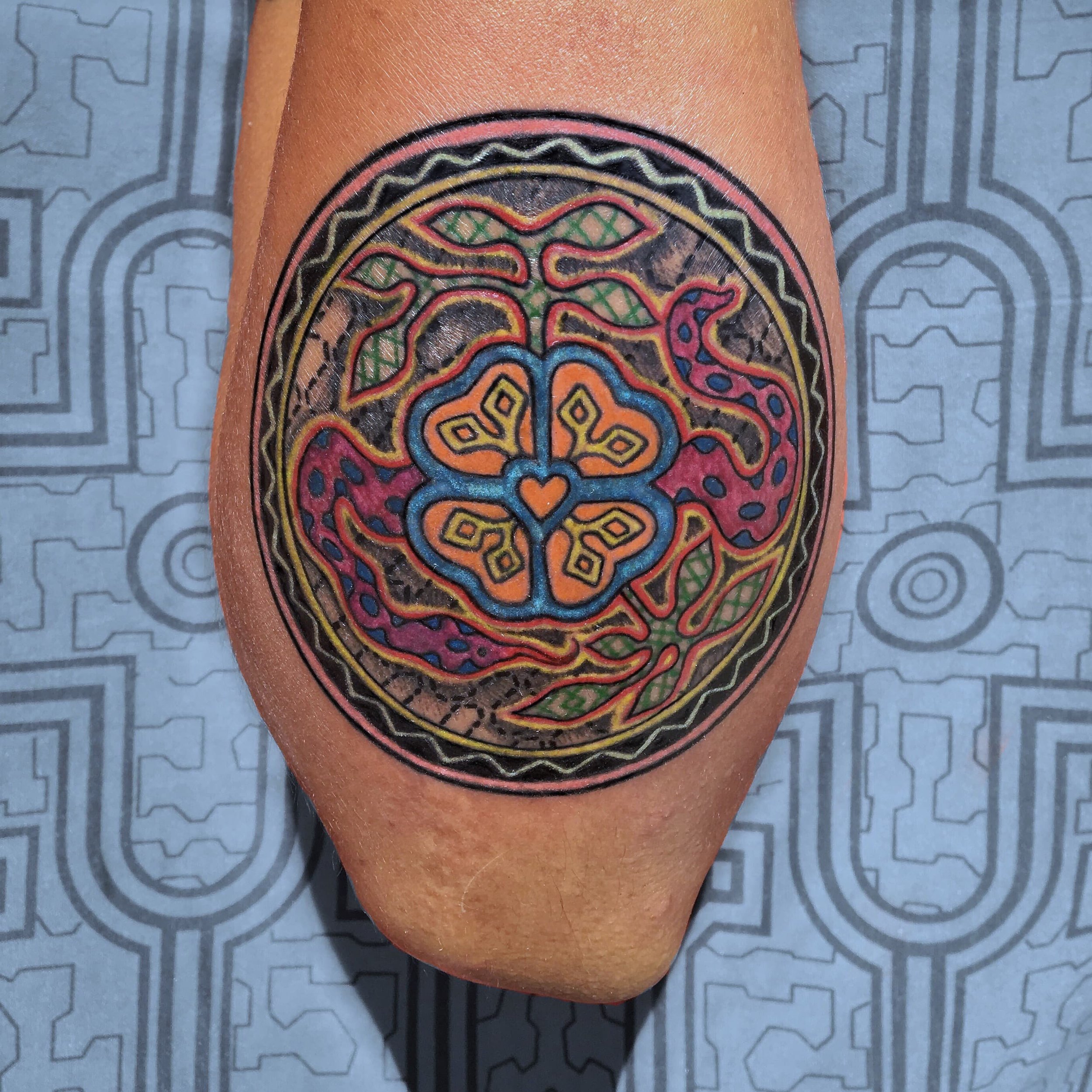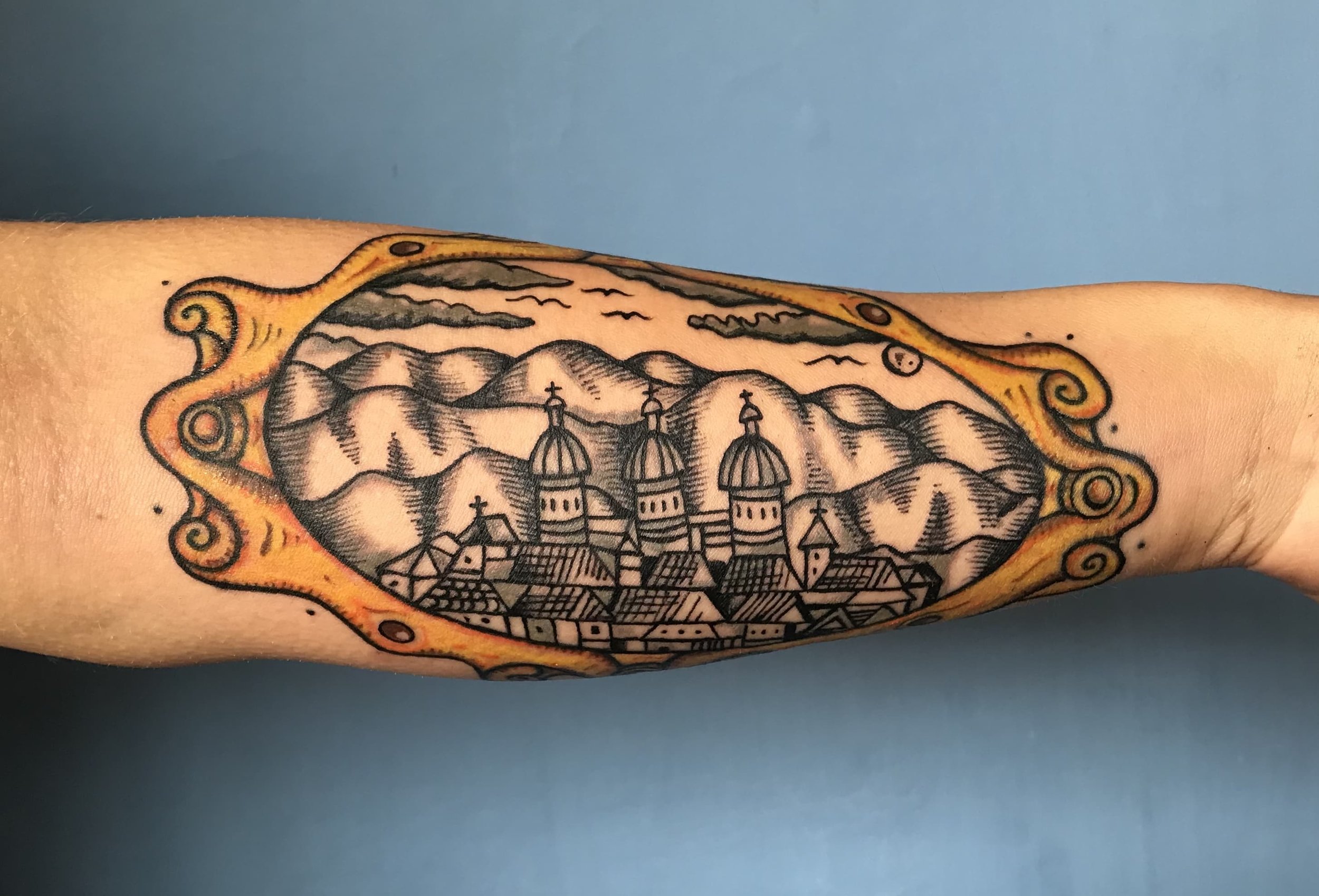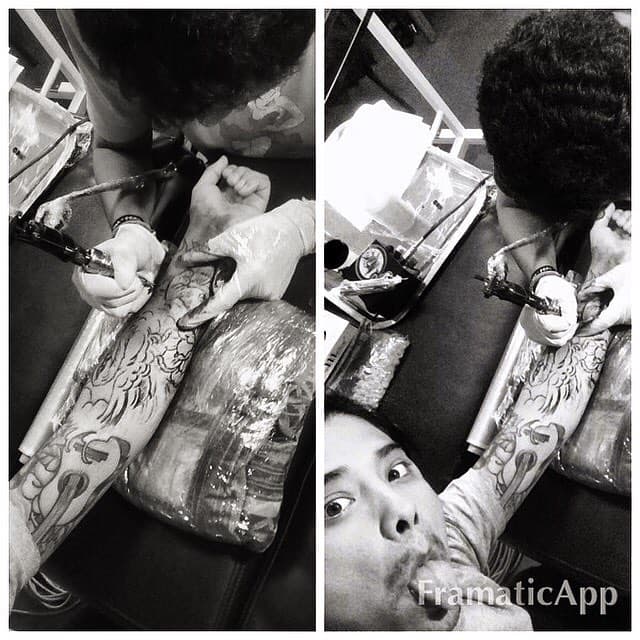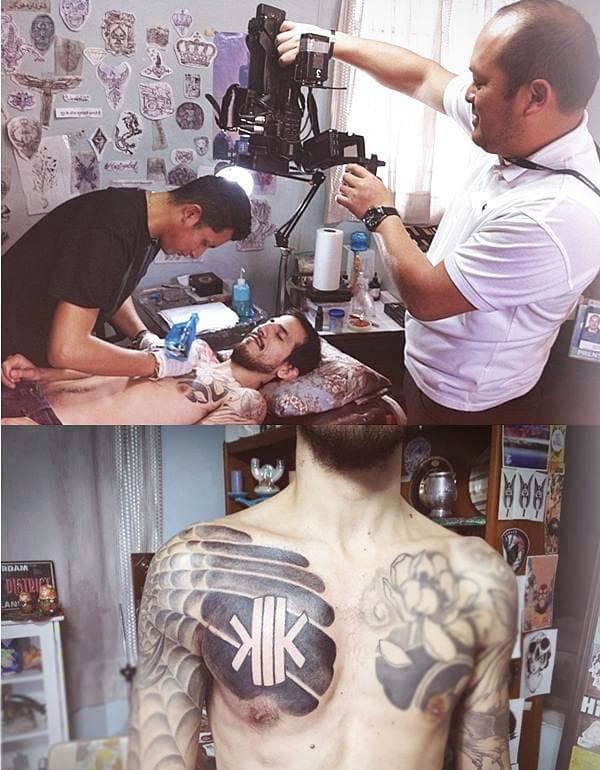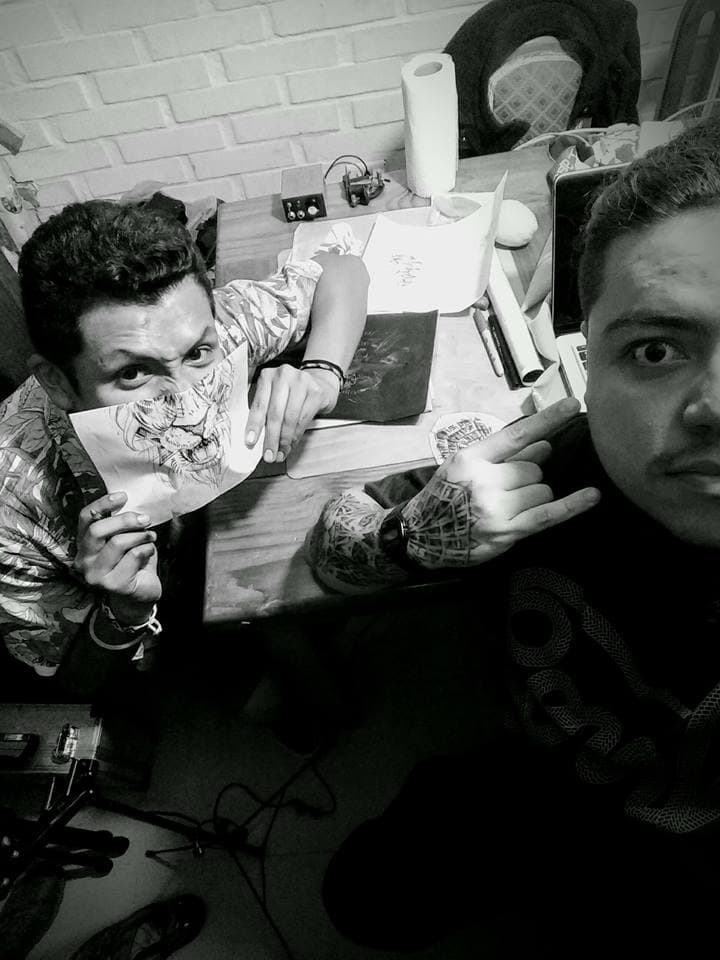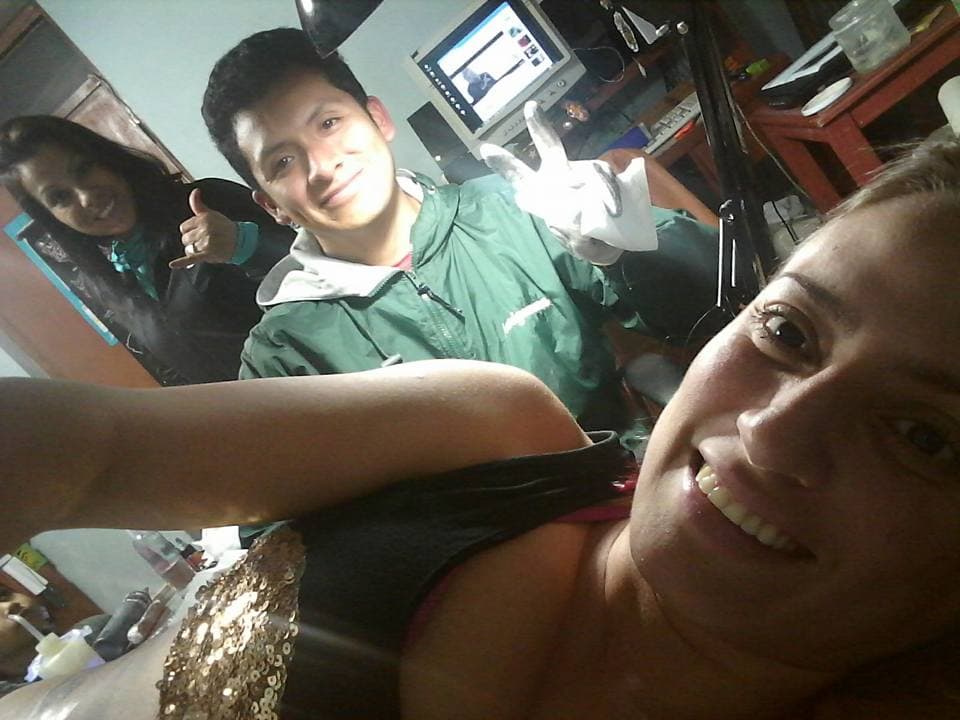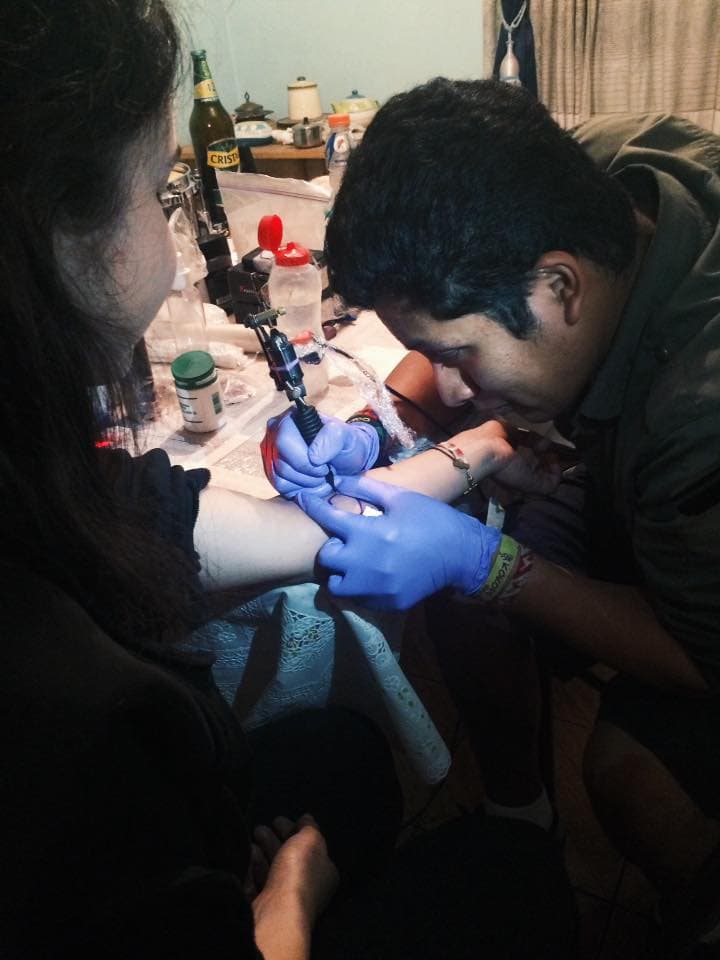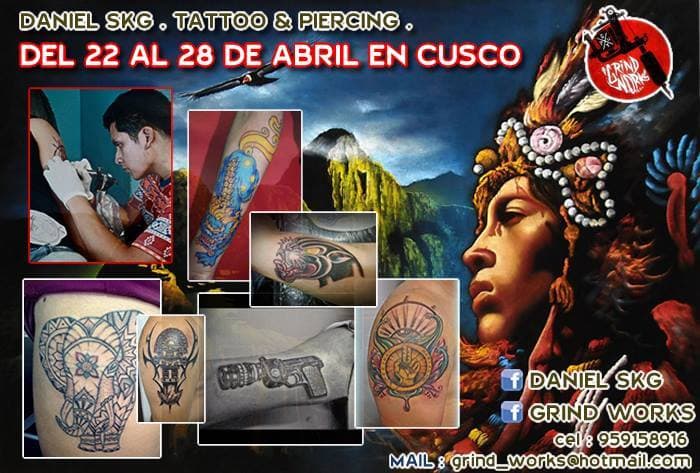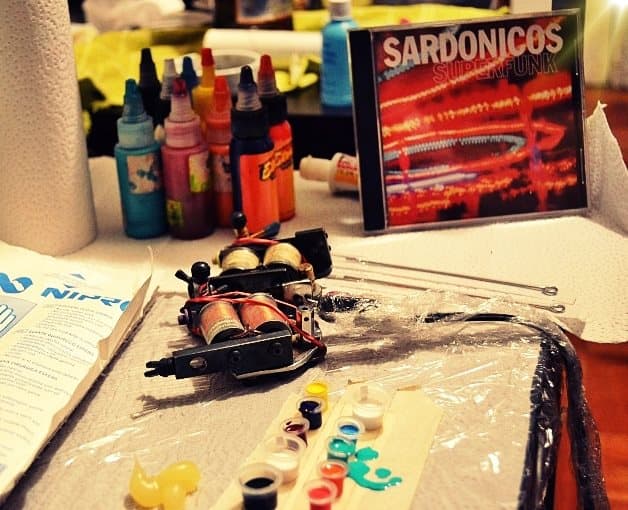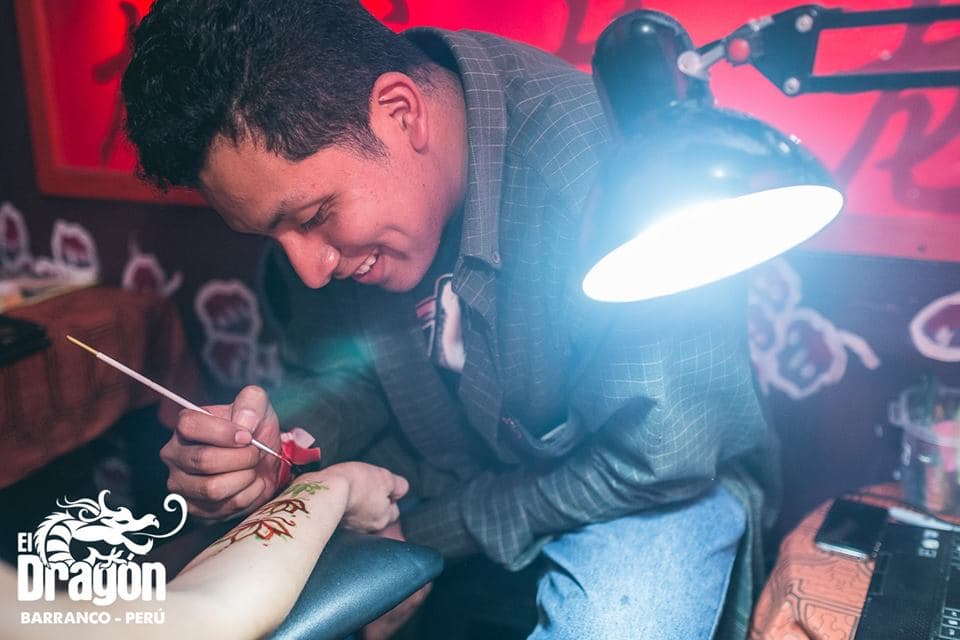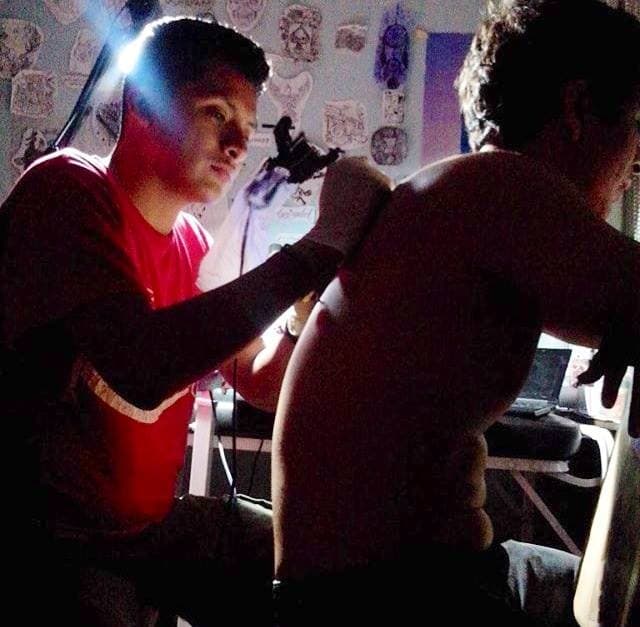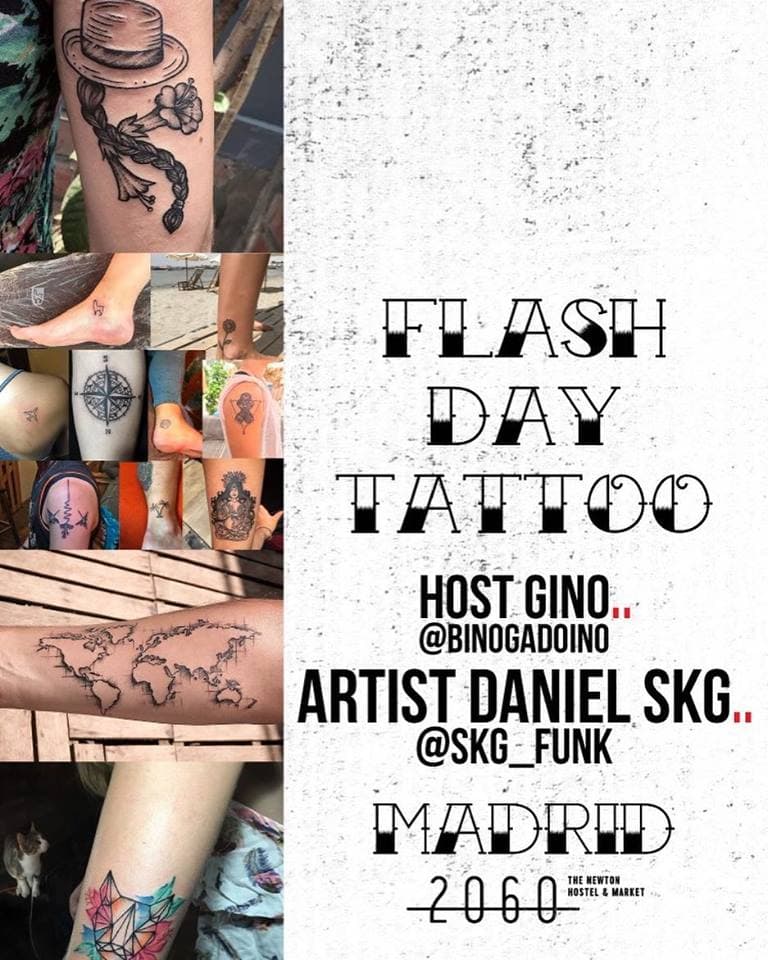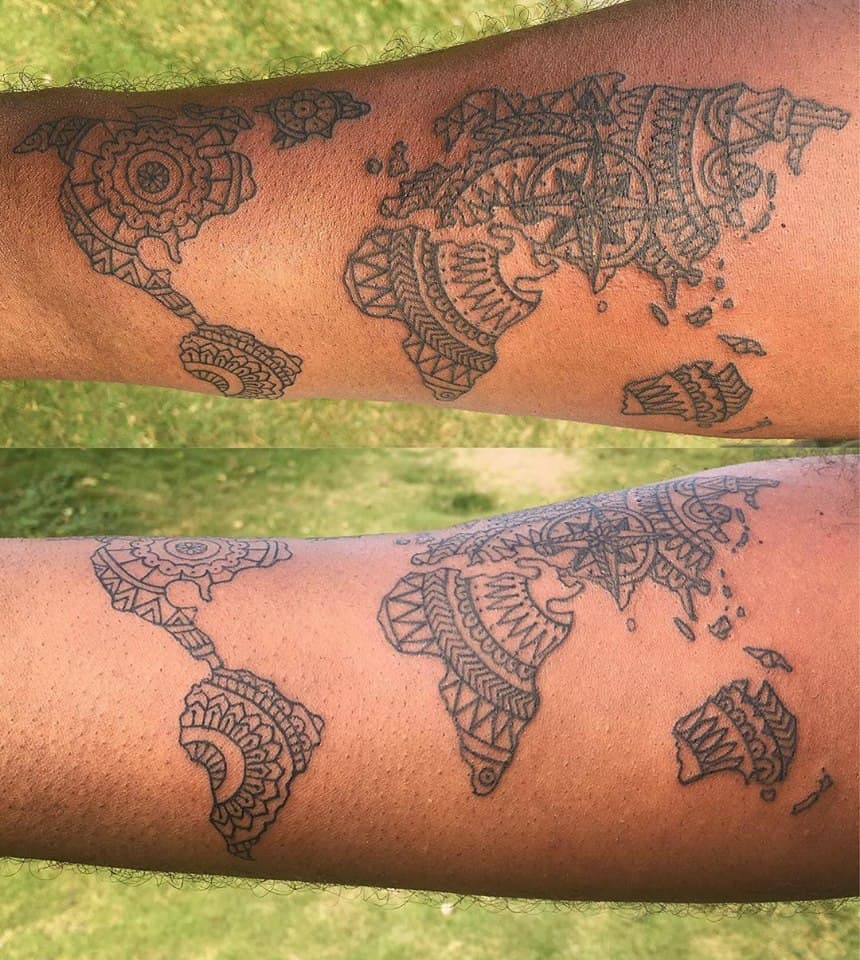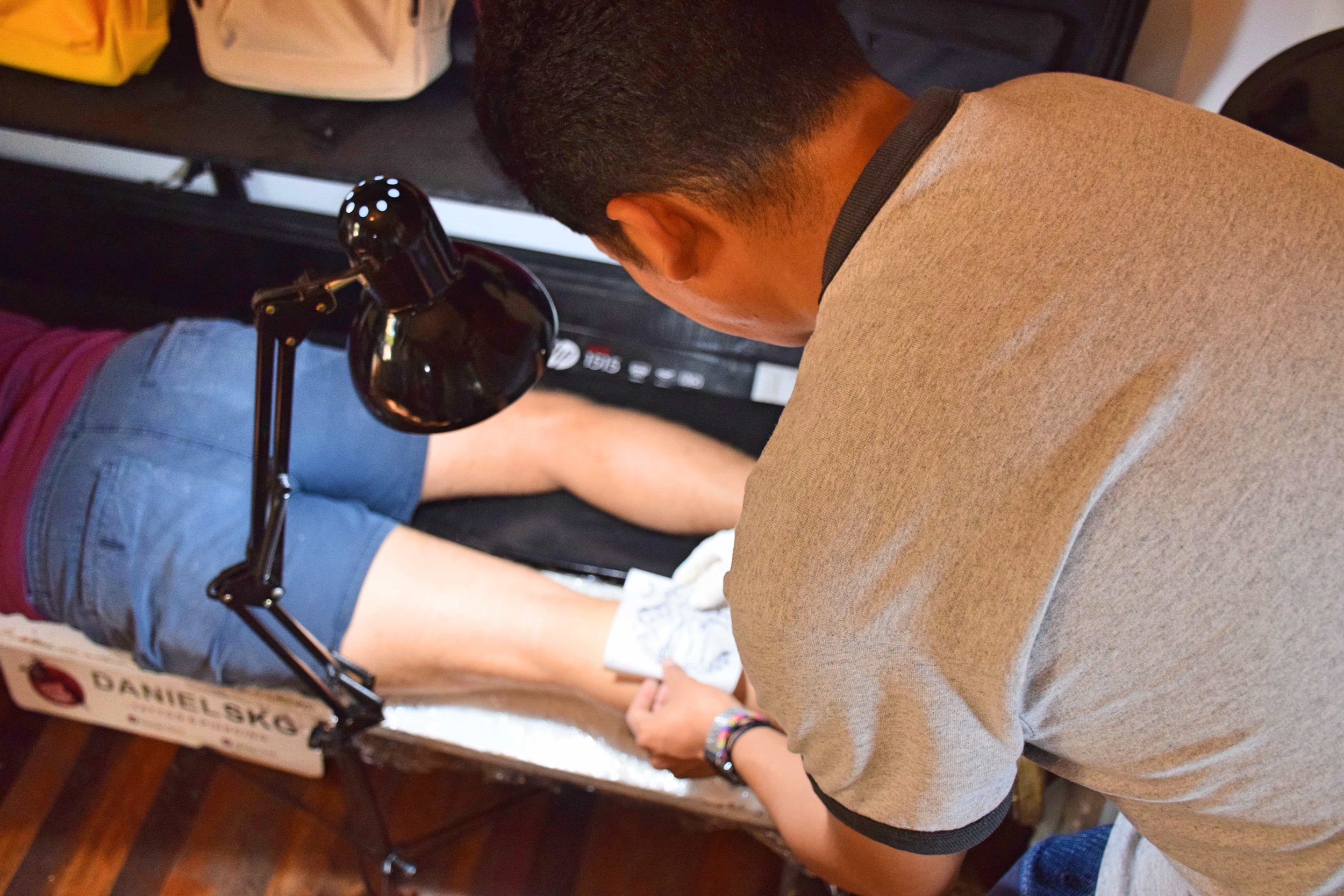Finding the funds to further your travels on the road takes some ingenuity. You can work in hostels, bartend for extra cash, blog, or teach English, but one of the most creative initiatives we’ve seen to make money on the road comes from the industry of art.
“Tat-tourism, that’s the word when you travel and tattoo,” Daniel SKG says. “I am a tat-tourist.”
Daniel SKG
Tom and I first met Daniel at a hostel in Paracas, Peru where we were working in exchange for accommodation. The whiteboard near the bar read "Traveling artist, Tattoos, line and dot work." We were amazed and intrigued by the prospect of someone making money by traveling and tattooing. But why Paracas? It's a desolate port town with only two tourist attractions. Both of which can be checked off the list in one day.
“I’ve set up in bars, at a friend's house, in the basement of a hostel, and out on the patio of a place in Cusco,” Daniel says. “When people come in, they say ah, I (have) never (seen) someone tattooing at a hostel before!”
Exactly. Daniel and others occupying the niche tat-tourism industry are turning heads and making their mark by being present in unlikely places. The job of a tat-tourist is just as you would imagine: bring images to life from paper to flesh for a rotation of eager clients in a mobile workspace. By bringing art to the forefront of the backpacking community, both parties are getting a good deal. Artists make money and travelers get a clean and professional, often commemorative, tattoo. Their market is huge.
Daniel’s journey to tat-tourism began in his hometown of Lima. From comic sketches as a kid to years of collective images and graphics, Daniel has always been bound to art. The experience of an apprenticeship in 2009 liviend his curiosity toward the boundaries of creativity, but it wasn't until he joined a band, as the drummer, that he approached the tattoo culture with serious dedication.
“I discovered tattoos through music... The first tattoo that inspired me was Anthony Kiedis (lead singer of the Red Hot Chilli Peppers) it was a big owl,” Daniel says. “It was huge. All the lines perfect. Totally bold, impressive.”
He goes on to describe the body canvas of Travis Barker, Tommy Lee, Brandon Boyd and other rock stars that have dedicated their skin to the artwork of others. Daniel’s connection to music, to funk specifically, was the initial reason he wanted to travel, to explore outside of Peru. The funk scene in places like Santiago, Chile, a three-hour plane ride away, intrigued him, but he needed money to get there.
“You meet a lot of other people doing things, people that dance earning money at the traffic lights, musicians traveling and making money playing in bars, in the metro, on the street,” Daniel says. “I feel so lucky that I can travel anywhere (tattooing) and mak(ing) money.”
Daniel’s met people from Egypt, Latvia, Finland, the USA, Germany, and of course Chile, to name a few. He says that he loves meeting people he can learn something culturally from and people he can practice his English with. As an artist, Daniel is driven by a variety of styles and is favorable to flat art with elements of Japanese influence. He says they don't fade. He wants to mix in more dot work and psychedelic elements, mandalas, and interwoven patterns. He's growing more confident, expanding his creativity, and finding his footing as a tat-tourist.
When we met up with Daniel the second time, it was in Santiago, Chile and he was outside on a bench sketching a tattoo idea for Josh, a client from our hostel. Josh showed Daniel a photo of a mountain range and asked for the tattoo to represent his time in Chile. Daniel began to draw—with his eyes closed.
“I close them for two reasons: to focus and also to see abstract lines that help me continue with the drawing,” Daniel explains. “People usually ask if I need to use glasses, but I just do that to focus.”
We were impressed by the process. Daniel’s incredibly talented for his level of modesty and his patience is something to be admired. He’s meticulous about each step from drawing, to transfer and finally tattooing. The process is almost ritualistic, and he doesn't falter in recognizing the permanence of each line—it has to be perfect. The process takes hours and with only one client for the day Tom and I wondered how the hell he was making any money.
“Sometimes I survive, sometimes I’m good,” Daniel says, “but as you know when you’re traveling, there can be problems that arise that cost money."
Daniel's work starts at roughly $50 for a coaster size tattoo all the way up to $150-$200 hundred dollars for fuller pieces. He can usually take on two clients in one day, but there’s no guarantee. The money stretches in a country with a cost of living being around $17/day, but his want to travel means more work, more consistency, and different locations.
"In Chile, funk saved my life," he says. "When I had trouble with money, all my funk friends wanted tattoos. Then I started making money.”
Daniel started gaining a following and picking up more opportunities after finding a community of musicians and artists in Santiago. He even began consistently tattooing at a club in Lima every Saturday. For now, he takes small trips from Lima rather than long-haul adventures so that he can build up enough to travel abroad. He hopes to visit more of South America, and eventually travel through Europe—tattooing and traveling.
“For sure I want tattoo all my life. For sure I want to make music all my life, and for sure I want to travel all my life.”
To follow Daniel’s tat-tourist journey, which has landed him in Spain as of 2018 making €2000 ($2,300/month) as a tat-tourist, you can find him at @SKG_Funk.






